Tibet (Xizang) Autonomous Region
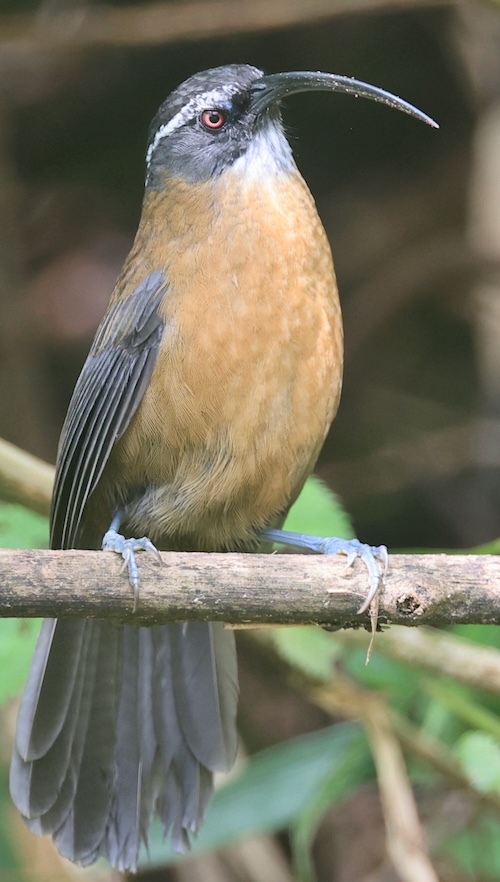
The Tibet Autonomous Region often shortened to Tibet in English or Xizang in Hanyu Pinyin is an autonomous region of the People’s Republic of China. It is located on the Tibetan Plateau, the highest region on Earth and covers 1,228,400 km2 (474,300 square miles). The population is small at around 3.7 million people, over half a million of whom live in the capital and largest city, Lhasa. In northern Tibet elevations reach an average of over 15,000 feet. Mount Everest is located on Tibet’s border with Nepal. Xinjiang, Qinghai and Sichuan lie to the north, northeast and east, respectively. There is also a short border with Yunnan Province to the southeast. The countries to the south and southwest are Myanmar, India, Bhutan, and Nepal. China claims Arunachal Pradesh administered by India as part of the Tibet Autonomous Region. It also claims some areas adjoining the Chumbi Valley that are recognised as Bhutan’s territory, and some areas of eastern Ladakh claimed by India. India and China agreed to respect the Line of Actual Control in a bilateral agreement. Traditional agriculture and animal husbandry continue to lead the area’s economy, and other people primarily work in the service sector.

Mount Everest – Public Domain via Wikimedia Commons
Physically, Tibet may be divided into two parts: the lakes region in the west and north-west and the river region, which spreads out on three sides of the former on the east, south and west. Both regions receive limited amounts of rainfall as they lie in the rain shadow of the Himalayas; however, the region names are useful in contrasting their hydrological structures, and also in contrasting their different cultural uses: nomadic in the lake region and agricultural in the river region. On the south Tibet is bounded by the Himalayas, and on the north by a broad mountain system. The system at no point narrows to a single range; generally, there are three or four across its breadth. As a whole the system forms the watershed between rivers flowing to the Indian Ocean – the Indus, Brahmaputra and Salween and its tributaries – and the streams flowing into the undrained salt lakes to the north.
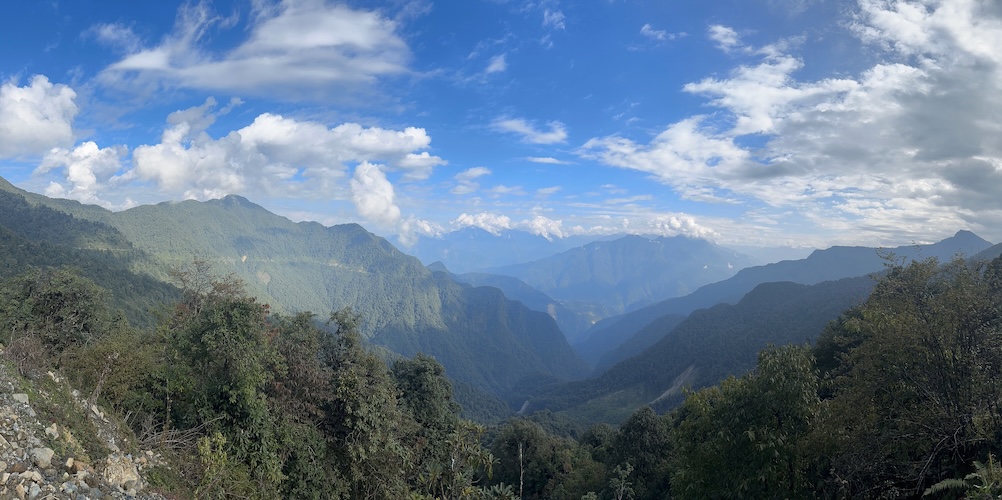
The lake region extends from the Pangong Tso Lake in Ladakh, Lake Rakshastal, Yamdrok Lake and Lake Manasarovar near the source of the Indus River, to the sources of the Salween, the Mekong and the Yangtze. Other lakes include Dagze Co, Namtso, and Pagsum Co. The lake region is a wind-swept Alpine grassland. This region is called the Chang Tang (Byang sang) or ‘Northern Plateau’ by the people of Tibet. It is 1,100 km (680 mile) wide and covers an area about equal to that of France. Due to its great distance from the ocean, it is extremely arid and possesses no river outlet. The mountain ranges are spread out, rounded, disconnected, and separated by relatively flat valleys.
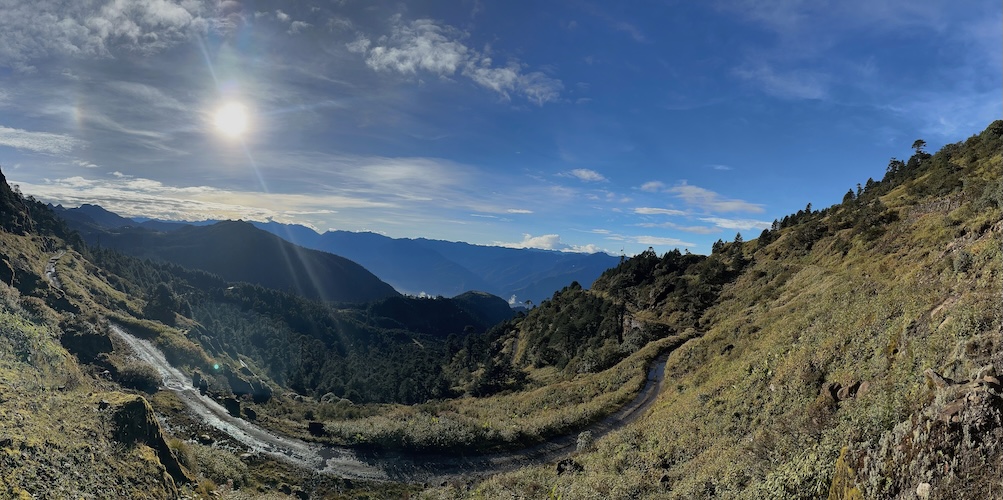
Tibet is dotted over with large and small lakes, generally salt or alkaline, and intersected by streams. Due to the presence of discontinuous permafrost over the Chang Tang, the soil is boggy and covered with tussocks of grass, thus resembling the Siberian tundra. Salt and fresh-water lakes are intermingled. The lakes are generally without outlet, or have only a small effluent. The deposits consist of soda, potash, borax and common salt. The lake region is noted for a vast number of hot springs, which are widely distributed between the Himalaya and 34° N, but are most numerous to the west of Tengri Nor (north-west of Lhasa). So intense is the cold in this part of Tibet that these springs are sometimes represented by columns of ice, the nearly boiling water having frozen in the act of ejection.

The river region is characterised by fertile mountain valleys and includes the Yarlung Tsangpo River (the upper courses of the Brahmaputra) and its major tributary, the Nyang River, the Salween, the Yangtze, the Mekong, and the Yellow River. The Yarlung Tsangpo Canyon, formed by a horseshoe bend in the river where it flows around Namcha Barwa, is the deepest and possibly longest canyon in the world. Among the mountains there are many narrow valleys. The valleys of Lhasa, Xigazê, Gyantse and the Brahmaputra are free from permafrost, covered with good soil and groves of trees, well irrigated, and richly cultivated. The South Tibet Valley is formed by the Yarlung Tsangpo River during its middle reaches, where it travels from west to east. The valley is approximately 1,200 km (750 mi) long and 300 km (190 mi) wide. The valley descends from 14,760 feet to 9,190 feet. The mountains on either side of the valley are usually around 16,400 feet high. Lakes here include Lake Paiku and Lake Puma Yumco.
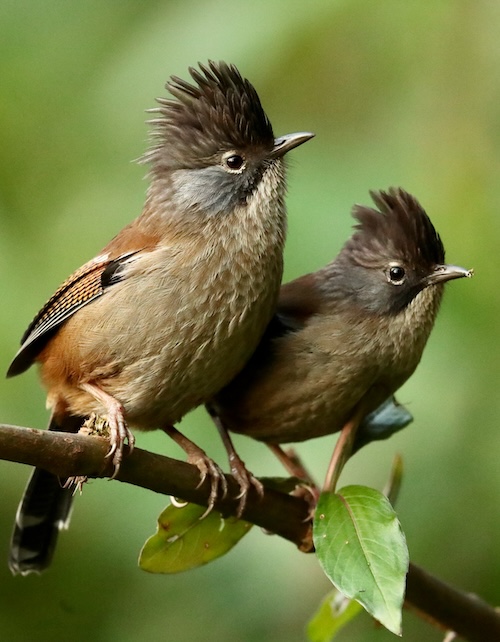
Hoary-throated Barwing Actinodura nipalensis – ©Bird-Photo-Tours ASIA
The climate of Tibet is severely dry nine months of the year, and average annual snowfall is only 46 cm (18 inches), due to the rain shadow effect. Western passes receive small amounts of fresh snow each year but remain traversable all year round. Low temperatures are prevalent throughout these western regions, where bleak desolation is unrelieved by any vegetation bigger than a low bush, and where the wind sweeps unchecked across vast expanses of arid plain. The Indian monsoon exerts some influence on eastern Tibet. Northern Tibet is subject to high temperatures in the summer and intense cold in the winter.
Birding Tibet
With more than 100 big rivers, Tibet provides wildlife some excellent habitats. There are about 488 species of birds recorded as well as 142 species of mammals including Snow Leopard, Palla’s Cat, Tibetan Fox, Tibetan Antelope and Tibetan Gazelle. Top birds include Himalayan Monal, Tibetan Eared Pheasant and Black-necked Crane. When traveling in and around Lhasa, they are many choices for a short birding outing. For example, Lhalu Wetland, the first wetland reserve in Tibet and the highest urban wetland in China. Norbulingka and the Lhasa River are also good choices. You can find some interesting species including the elusive Lord Derby’s Parakeet, Black-necked Crane, Tibetan Blackbird, Streaked Rosefinch, Bar-headed Goose, Pallas’s Gull, Plain & Brown-cheeked Laughingthrushes, White-browed Tit Warbler, Brown and Accentor, etc.
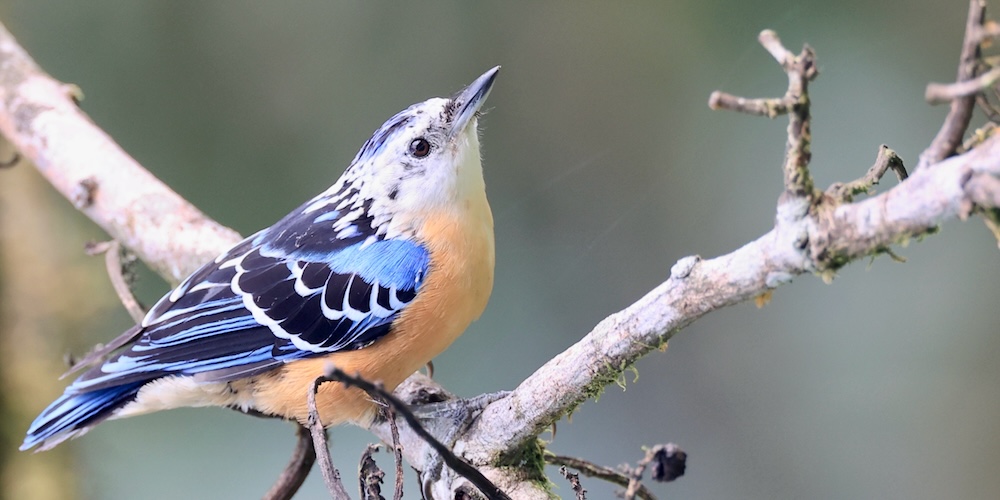
Beautiful Nuthatch Sitta formosa – ©Bird-Photo-Tours ASIA
Xiongse Temple is located to the southwest of Lhasa and is the biggest Nuns’ temple in Tibet. It is also a nice place to see Tibetan Eared Pheasant. While other exiting species here include Tibetan Snowcock, Tibetan Partridge, Tibetan Blackbird, Giant Babax, White-browed Tit Warbler, Himalayan Beautiful & Pink-browed Rosefinches and Brown-cheeked Laughingthrush.
Yarlung Tsangpo Grand Canyon is located in Motuo, Linzhi, Bomi and Milin counties, and is the deepest canyon in the world. It has amazing precipitation due to being the Indian Ocean water vapor channel. The mountain altitudinal belt spectra are significant in this area that includes habitat types from snow base to tropical monsoon rain forest. With 3,768 higher plant species and 339 vertebrate species, the biodiversity of the reserve is extremely rich. The reserve has recorded over 200 bird species including Grey-backed Shrike, Giant Babax, Brown-cheeked Laughingthrush, Black, Daurian and White-bellied Redstarts, Common & Pink-rumped Rosefinches, Godlewski’s Bunting and Tickell’s Leaf Warbler, among others.
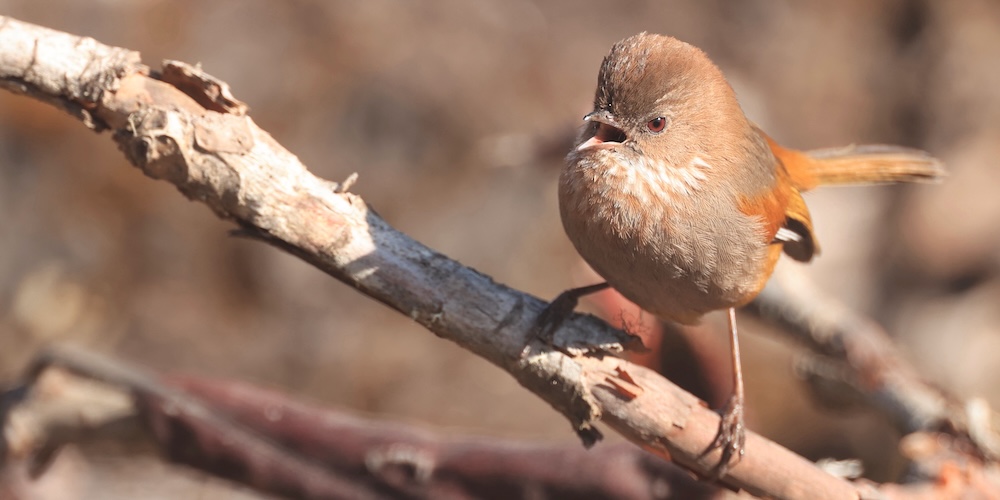
Ludlow’s (Brown-throated) Fulvetta Fulvetta ludlowi – ©Bird-Photo-Tours ASIA
Yamdrok Lake is located in Langkazi County Lhoka Prefecture and covers 638 square kilometres It is one of the Three Holy Lakes and the largest bird habitat in south Tibet. Around 300 bird species have been recorded. It is an important stopover for many migrating birds during spring and summer including Black-necked Crane, Brown-headed Gull, Bar-headed Goose, Long-legged & Upland Buzzards, Yellow-billed Chough, Tibetan Partridge, Ground Tit, Horned, Sykes’s Short-toed & Hume’s Larks, Giant Babax, Tibetan Blackbird, Robin & Rufous-breasted Accentors, Black-winged, Tibetan, Rufous-necked & White-rumped Snowfinches, Great Rosefinch, Plain Mountain-Finch & Rosy Pipit, etc.
-
Philip He
Alpine Birding
http://www.alpinebirding.com -
Wikipedia
GNU Free Documentation License
https://en.wikipedia.org/wiki/Tibet_Autonomous_Region
-
Number of bird species: 896
(As at June 2025)
-
Avibase
PDF ChecklistThis checklist includes all bird species found in Tibet , based on the best information available at this time. It is based on a wide variety of sources that I collated over many years. I am pleased to offer these checklists as a service to birdwatchers. If you find any error, please do not hesitate to report them. -
E-Bird
PDF ChecklistThis checklist is generated with data from eBird (ebird.org), a global database of bird sightings from birders like you. If you enjoy this checklist, please consider contributing your sightings to eBird. It is 100% free to take part, and your observations will help support birders, researchers, and conservationists worldwide.
-
Birds of China and Tibet
| By Liu Yang & Chen Shuihua | Princeton University Press | 2023 | Flexibound | 672 pages, plates with 4000 colour illustrations, colour distribution maps | ISBN: 9780691237527 Buy this book from NHBS.com -
Guide to the Birds of China
| By John MacKinnon | OUP | 2022 | Edition 2 | Paperback | 513 pages, 164 plates with colour illustrations; colour distribution maps | ISBN: 9780192893673 Buy this book from NHBS.com
-
Xinjiang Bird Watching Society
InformationXinjiang Bird Watching Society, which was established in May 2004, is an NGO with about 40 core members concerning and protecting birds in Xinjiang. It is now under the Xinjiang Ecological Society
-
IBA Maidika
InformationSatellite ViewA vast swamp meadow above 4,900 meters, with permanent and seasonal pools and lakes in the headwater region of the Maidicangbu, a tributary stream of the Lhasa River… -
IBA Mapangyong Cuo
InformationSatellite ViewA high-altitude wetland of the Tibetan plateau (4,500-6,500m asl) covering Mapangyong and Laang Lakes with surrounding swamps and rivers, "one of the highest elevation freshwater wetlands in the world" and a source of the Yalu Tsangpo/Brahmaputra River… -
NR Chang Tang
InformationSatellite ViewPredators include snow leopards (Panthera uncia or Uncia uncia), Tibetan wolves (Canis lupus chanco), Turkestan lynx (Lynx lynx isabellinus) and Tibetan blue bears (Ursus arctos pruinosus). At the bottom end of the food chain are large numbers of pika... -
NR Medog
InformationSatellite ViewMedog Nature Reserve is a very complex natural environment with rich biotic resources. It houses a great variety of vegetation, including some tropical biotic species and more than 3,000 species of higher plants, over 40 of which are named after Medog. Varied plants from tropical to Frigid Zone can be seen here. In a word, it is a microcosm of all the types of vegetation existing between the North Pole and China's Hainan Island. In consequence, Medog Nature Reserve becomes a home to various wild animals. It provides excellent living and breeding conditions for over 40 species of wild animals under key national protection, such as langur, black-headed tragopan, red-chested tragopan, grey-bellied tragopan, zibeth, rasse, hornbill, clouded leopard, boa, king cobra and lesser panda. -
NR Motuo
ArticleSatellite ViewThe Motuo Nature Reserve with an area of 62,620 hectares lies in Motuo County of Tibet Autonomous Region… -
NR Qiangtang
InformationSatellite ViewQiangtang nature reserve as the biggest nature reserve was founded in 2000, which located in northern of Tibet, southern of Mt.Kunlun and Hoh Xil, northern of Mt.Gangdisi and Mt.Nien ching tanggula. It total area is about 29.8 million hectares, its area just secondly to Greenland National Park in the world. At the same time it is the highest latitude nature reserve.
-
eBird
SightingseBirding This Month
-
Alpine Birding
Local Tour OperatorYou want to go birding in your own way, looking for your own target birds, birding in your own pace. We can help you to achieve that, having a birding trip as you wish. -
Bird-Photo-Tours ASIA
Tour OperatorBird-Photo-Tours ASIA is the specialists in bird photography tours on the Asian continent with a portfolio of 50 bird photography tours across 26 countries and a particular specialism in bird photography in China including the Tibetan Autonomous Region. -
BirdQuest
Tour OperatorBirdquest’s Best of China’s Tibetan Plateau birding tours are a real adventure as we travel across the Tibetan Plateau, known as ‘The Roof of the World’, in both Xizang and Qinghai Provinces. -
China Bird Tour
Local Tour Operator20 day Qinghai and Tibet birding tour -
China Birding Tour
Local Tour Operator14 days Qinghai and Tibetan Plateau -
Greatway Tour
Local Tour OperatorBird Watching and Wildlife Adventure Tours in Tibet, Sichuan, Qinghai and Yunnan -
HeatherLea
Tour OperatorOften described as ‘The Roof of the World’, the Tibetan Plateau has long held a fascination for western birders, and we are delighted to offer this spectacular tour visiting the major birding sites... -
Naturalist Journeys
Tour OperatorWith stunning mountain vistas and the rich cultural heritage of Tibet, this is truly a bucket-list journey for any avid birder. -
Royle Safaris
Tour OperatorAs far as uniqueness is concerned Tibet has to be regarded as the number one region of the world. -
Summer Wong Bird Tours
Local Tour OperatorSummer Wong Bird Tours specialises in China birding tours of Sichuan, Yunnan, Qinghai, Tibet & Eastern China... -
Tibet Highland Tours
Local Tour OperatorIn Tibet, we have more than 470 different speices of birds, 82% of birds are in Everest national park. In Lhasa, there are 130 different species of birds... -
Tibet Horizon
Local Tour Operator7 Days Lhasa Nyingchi and Lulang Forest Bird Watching Tour -
Tibet Tour
Local Tour OperatorThe famous Zongjiao Lukang Park, Lhasa River and Shugsheb Nunnery are all popular attractions where you can enjoy a pleasant birdwatching experience with different sights in each place. Wonderful trip worthy your try! -
Tibet Vista
Local Tour OperatorHome to over 650 bird species on lofty Tibetan Plateau, Tibet is not only a safe haven for rare birds but also a paradise for birdwatchers. -
Tropical Birding Tours
Tour Operatorombined with our time in Sichuan’s high mountains, or shans, will be a side trip onto the Tibetan Plateau, with it distinct culture, and unique birds, not least the elegant Black-necked Crane, gorgeous White-browed Tit-Warbler and Przevalski’s Pinktail, a monotypic family and therefore a must for family listers. If you only do China once, this is the place to choose.
-
2017 [07 July] - James Eaton
PDF ReportFor those who like truly wild places, very localised speciality birds and a smattering of rare mammals, our tour southwards across the Tibetan plateau culminating in the fabled Tibet,where the fabulous Potala Palace rivals any of the natural wonders seen during the tour, is perhaps the most iconic tour in Asia... -
2018 [06 June] - Hannu Jännes
PDF Report...Yes, you read it right, this time we even saw the near mythical Sillem’s Mountain Finch, a species that had been seen perhaps only by a handful of people before! Our stunning list of special birds included the much sought after Lord Derby's Parakeet as well as Tibetan Eared Pheasant, Szechenyi’s Monal Partridge (or Buff-throated Partridge), Giant and Tibetan (or Kozlov’s) Babaxes, Brown-cheeked (or Prince Henri’s) Laughingthrush, Ground Tit, Tibetan (or Kozlov’s) Bunting, Tibetan (or Roborovski’s) Rosefinch and the strange Przevalski’s (or Pink-tailed) Finch, the sole member of its family... -
2018 [07 July] - James Eaton - Tibetan Plateau & Xinjiang
PDF ReportFor those who like truly wild places with stunning scenery, very localized, niche birds and a smattering of rare mammals, our tour across the Tibetan plateau culminating in the fabled Tibet, where the fabulous Potala Palace rivals any of the natural wonders seen during the tour, is perhaps the most iconic tour in Asia. -
2019 [06 June] - Mike Nelson - Tibetan Plateau and Xinjiang
PDF ReportSpread across 2,500,000 square km of China, the Tibetan Plateau is a vast expanse of earth with an average height of over 4,500 meters. Bordered in the north by the Taklimakan Desert, and the Tien Shan which adds a more European flare as many species meet their eastern terminus here. -
2020 [06 June] - Tang Jun
PDF ReportOur main purpose is Sillem's Rosefinch re-discovered by Yann Muzika in 2012 and deepresearchsome remote sites of Sichuan & Tibet Plateau where few people reached for some quality mammals... -
2021 [04 April] - Summer Wong
PDF Report. In late winter and early spring of 2021, we visited the Qinghai-Tibet Plateau three times, mainly in its northeastern territory in Qinghai Province, to look for some extraordinary species of the plateau. Winter is not an ideal time for conventional travel due to the heavy snow and low temperatures, but an ideal time for wildlife tours as they start to cluster and move to lower altitudes, and the low human activity in winter also makes it a good time to look for wildlife. -
2021 [08 August] - Wenyi Zhou
PDF ReportThis August, we spent 12 days exploring the exciting Qinghai-Tibet Plateau in its best summertime. As expected, we were rewarded by some iconic species (with 131 bird species spotted in total) during our enjoyable and productive birding on the plateau...
-
Qinghai-Tibet Plateau
WebpageThere are 370 kinds of birds on the Qinghai-Tibet Plateau, of which, 30 are under top government protection…



